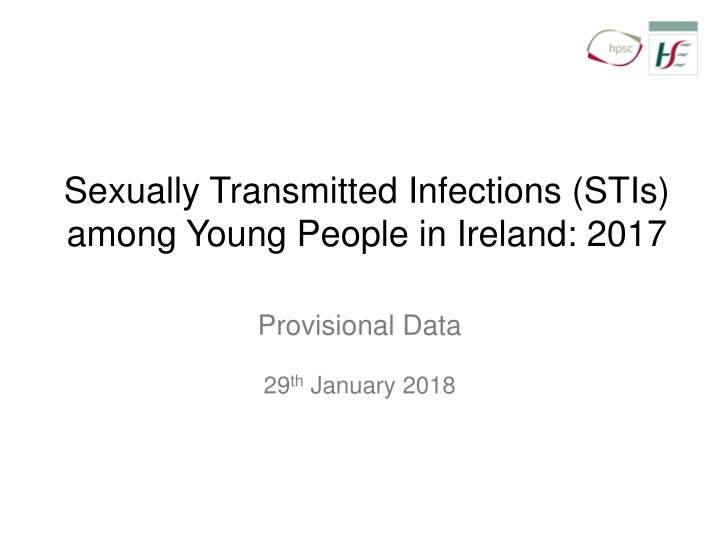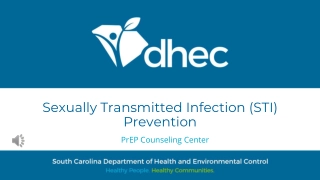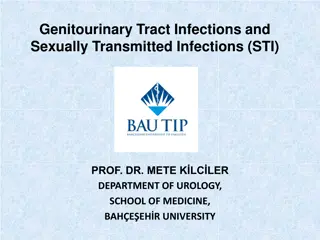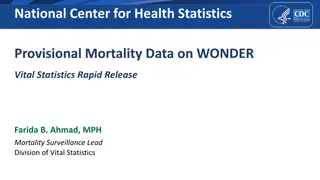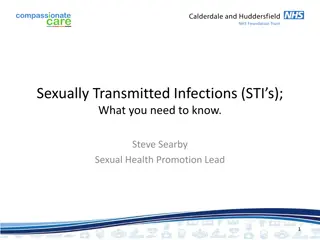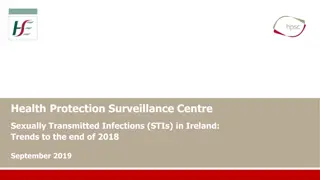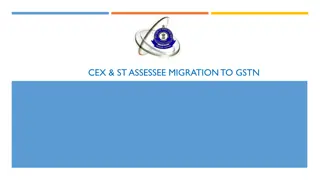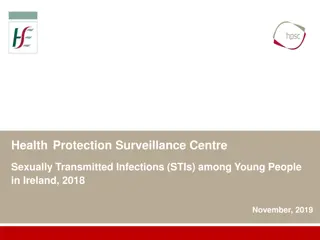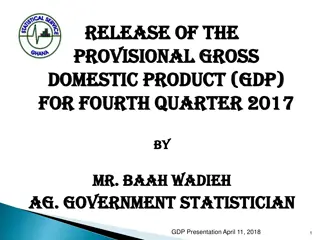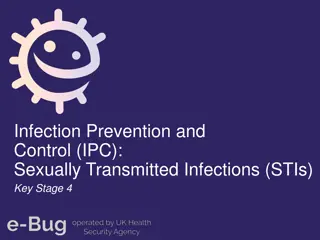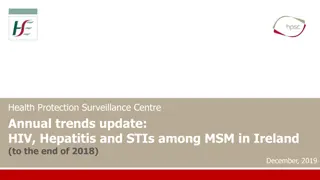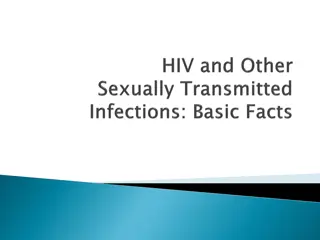STIs among Young People in Ireland: 2017 Provisional Data
These slides provide provisional data on Sexually Transmitted Infections (STIs) among young people in Ireland for the year 2017. The data includes notifications of chlamydia, gonorrhoea, and genital herpes among individuals aged 15-24. There was an 11% increase in STIs compared to the previous year, with chlamydia being the most common infection. The distribution by sex and burden of disease are also highlighted. Recommendations for preventing STIs include practicing safer sex, regular testing, and utilizing free sexual health services and STI testing.
Download Presentation

Please find below an Image/Link to download the presentation.
The content on the website is provided AS IS for your information and personal use only. It may not be sold, licensed, or shared on other websites without obtaining consent from the author.If you encounter any issues during the download, it is possible that the publisher has removed the file from their server.
You are allowed to download the files provided on this website for personal or commercial use, subject to the condition that they are used lawfully. All files are the property of their respective owners.
The content on the website is provided AS IS for your information and personal use only. It may not be sold, licensed, or shared on other websites without obtaining consent from the author.
E N D
Presentation Transcript
Sexually Transmitted Infections (STIs) among Young People in Ireland: 2017 Provisional Data 29th January 2018
STIs in young people, 2017 Acknowledgements The Health Protection Surveillance Centre (HPSC) would like to thank all those who provided the data for this report, particularly the STI clinics, the infectious disease surveillance staff within the departments of public health, the laboratories and GP clinics. STI data were extracted from CIDR on 29th January 2018, and were correct at the time of publication. 2017 data are provisional
STIs in young people, 2017 These slides present provisional data on STIs notified to HPSC during 2017 via CIDR and include notifications of chlamydia, gonorrhoea and genital herpes in young people (individuals aged 15-24 years old). http://www.hpsc.ie/CIDR/ Following validation of data for all of 2017, a detailed report on the epidemiology of STIs for 2017 will be produced. http://www.hpsc.ie/a- z/hivstis/sexuallytransmittedinfections/publi cations/stireports/ 2017 data are provisional
STIs in young people on the rise 11% increase compared to 2016 2017 N 2016 N % change 2016-2017 STIs in 15-24 year-olds 3362 +10.9 Chlamydia trachomatis infection 3730 732 +19.1 Gonorrhoea 872 583 +2.6 Herpes simplex (genital) 598 4677 +11.2 5200 Total 2017 data are provisional
STIs in young people, 2017 Distribution by sex (15-24 year-olds) Overall 59 41 Gonorrhoea 33 67 Chlamydia 62 38 Genital Herpes 81 19 0% 20% 40% 60% 80% 100% % Female % Male 2017 data are provisional
STIs in young people, 2017 Burden of disease (15-24 year-olds) Chlamydia in young people make up 50% of all cases reported Gonorrhoea in young people make up 39% of all cases reported Genital Herpes inyoung people make up 38% of all cases reported Herpes simplex virus (HSV) type where known (88%) 83% HSV-1 17% HSV-2. 2017 data are provisional
Preventing STIs Safer sex Get tested regularly For information on free sexual health services and STI testing: http://www.thinkcontraception.ie/Services-Information/Find-a- Service.152.1.aspx www.man2man.ie (resource for gay, bisexual men) Use condoms for vaginal, oral and anal sex Reduce the number of partners and overlapping partners The more partners you have, the greater your chance of coming into contact with an infected person
Further information Where to get more details about STIs More detailed tables on 2017 STI data will be available on the HPSC website later in 2018. Information on STI trends across all age groups is available in previous annual epidemiological reports. http://www.hpsc.ie/a- z/hivstis/sexuallytransmittedinfections/publi cations/stireports/ You can stay up-to-date with current STI data with the Weekly HIV & STI report. http://www.hpsc.ie/A- Z/HIVSTIs/SexuallyTransmittedInfections/P ublications/STIReports/STIWeeklyReports/
